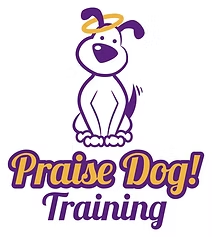
Training with Kindness
Effective, reward-based training...no need for choke chains, prong collars or shock collars
Serving Richland and Lexington Counties in SC
Serving other counties remotely
Want updates on the latest classes and news? Subscribe to our newsletter by emailing.
How do we train?
Each dog is an individual. When working with dogs and their people, we evaluate each dog and his environment and we make sure we understand the concerns of you, the owner. We use proven, force-free, reward-based protocols to address most problem behaviors but we also have the experience to adapt or change protocols if we are not getting results.
So, exactly how do we train?
-
We teach you how to understand your dog’s behavior as well as train the needed skills. We help you understand what your dog is communicating with its body language. The better you understand what your dog is trying to tell you, the more effective your training will be.
-
We use marker training. This means that we use a word or noise to communicate to your dog that they did exactly what we wanted, we “mark” the correct behavior and then reward. In most cases we use a clicker as the marker. A clicker is a mechanical noise marker that makes a quick snapping sound. The marker sound or word predicts to the dog that he will get a reward. If you do not want to use a clicker, we will not make you! You can use a marker word, usually the word Yes. If you have concerns about managing a clicker, treats, a leash and your dog, don’t worry. We show you how to do it.
-
We teach in foundation steps. We start with easy steps for your dog and, as he is successful, we add more complicated behaviors. For example, first we teach a Sit, then a Sit-Stay while you stand close to your dog, then a Sit-Stay while you move away. As your dog becomes reliable with the cue, we add distractions.
-
We set your dog (and you) up for success. If your dog is making mistakes over and over again, then the trainer is doing something wrong!
Just because we are force-free and reward-based does not mean that we let a dog continue to practice difficult and unwanted behaviors. We are positive, but not permissive. But instead of resorting to the use of aversive tools like a shock collar, we coach you on setting up the environment to manage and prevent the behavior, then help you teach the dogs alternative, acceptable behaviors.
The use of tools like prong collars or shock collars have been proven to
create negative fallout behaviors such as aggression or fear . We have
been called in to assist owners in repairing the psychological and
behavioral damage caused to dogs that have been punished with
We encourage anyone to observe trainers before engaging them. We welcome visitors to our family-friendly classes so that you can see exactly how we train. If you would like to observe a class, send us an email and we can work out an evening for you to observe.